#johannstadt
Text

Throwback Dec 8, 2012. What seems to have been a frosty winter morning. The building on the right, socialist modernism in slow decay, back then only contained a bunch of smaller stores, a walk-in laundry service and a carpenter workshop. And disappeared a couple of years later, making room for a discounter superstore and parking lots. Time passes, and structures change, not necessarily for the better.
#throwback #smartphonephotography #outerworld #dresden johannstadt #the winter and the lights #before sunrise
#Throwback#outerworld#smartphonephotography#before sunrise#the winter and the lights#dresden johannstadt
5 notes
·
View notes
Text
Renovierungszentrum Seifert
📍 96 Dürerstraße
Dresden OT Johannstadt Sachsen, 01307
#dienstleistung #maler #renovierungszentrum #Dresden #auftragsagentur24 #auftragsvermittlung
0 notes
Text
Fußball-Frauen - Wichtiger Sieg in Dresden
SpG Loschwitz/ Johannstadt 2. Vs. SV Reichenbach 1:3 (1:1)
Die Mädels vom SV hatten nach dem knappen Sieg über Serkowitz zwei Wochen Pause ehe die Serie weiterging. Dieses Mal gastierte die Mannschaft beim Tabellenvorletzten Loschwitz/Johannstadt. Was im Hinspiel noch eine klare Angelegenheit war, sollte im Rückspiel nicht so sein. Dessen waren sich die Oberlausitzerinnen bewusst. Die…

View On WordPress
0 notes
Photo

Erster Advent und Lichterfahrt nach Johann'stadt @_johanngeorgenstadt_ #johanngeorgenstadt #johannstadt #ersteradvent #lichterfahrt #vorweihnachtszeit #weihnachten #erzgebirge #erzgebirge_erleben #aue #erzgebirg #comeerabello #quantosiabello #hashtag (hier: Johanngeorgenstadt) https://www.instagram.com/p/B5i7KY3IL9o/?igshid=1rn9ymdq47frs
#johanngeorgenstadt#johannstadt#ersteradvent#lichterfahrt#vorweihnachtszeit#weihnachten#erzgebirge#erzgebirge_erleben#aue#erzgebirg#comeerabello#quantosiabello#hashtag
0 notes
Photo

Trinitatisfriedhof, Dresden.
4 notes
·
View notes
Photo
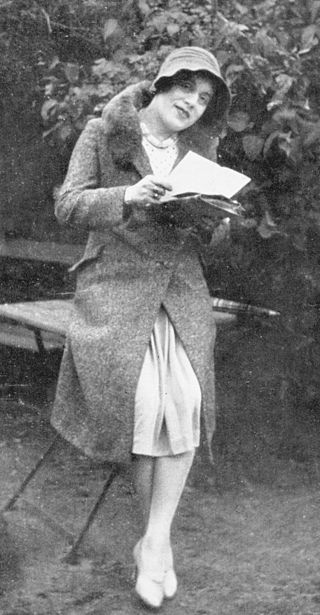
Lili Elbe (born December 28, 1882 in Vejle , Denmark as Einar Mogens Andreas Wegener [1] ; † September 12, 1931 in Dresden , Germany ) was a Danish painter . She was probably one of the first intersex people to undergo gender reassignment surgery in 1930/31 . Lili Elbe had operations first in Berlin and then three more times in Dresden.
The writer Niels Hoyer writes in his book A Man Changes His Sex: A Life Confession that Lili Elbe was born with both male and female organs.
Gerda Wegener
: Lili Elbe, ca.1928
Lili Elbe and Gerda Gottlieb met as students at the Royal Danish Academy of Art in Copenhagen and married in 1904. Elbe specialized in landscape and architectural painting, while Gottlieb opted for illustration and fashion graphics. In order to expand their sphere of activity, they moved to Paris in 1912 , where Gerda could also live out her lesbian orientation and Lili could live out her female identity more freely.
Around 1913 it became known that the model for Gerda's fashionable figurines was a phenotypic man who called himself Lili Elbe. Only the closest friends knew that Lili Elbe was identical to Einar Wegener; Gerda Wegener introduced Lili to strangers as her husband's sister. In 1930 Lili Elbe decided to finally make the physical adjustment to the perceived gender . In February 1930 she followed Kurt Warnekros' instructions and went to Berlin. The Institute of Sexology of Magnus Hirschfeld in Berlin led the gender reassignment surgeryby. The first operation took place in a practice in Berlin. Then Elbe went to the Dresden women's clinic. On May 26, 1930, Kurt Warnekros performed a second operation.
As a result of the sex reassignment operations, the marriage was annulled by the Danish king; Elbe received papers in its new name.
A few months after the fourth operation in 1931, complications arose, probably due to transplant rejection , from which Lili Elbe died. [4] [5] She was buried on the Dresden Trinity Cemetery in Dresden-Johannstadt in the IIC field.
New tombstone 2016. Lili Elbe's grave, which was leveled in the 1960s, was restored in 2016. The new tombstone was funded by Focus Features , the production company for The Danish Girl .
Lili Elbe's life story Fra mand til kvinde (From man to woman) first appeared in Danish in 1931, was translated into German, published in Dresden in 1932 and then in London in 1933 in English in a translation from the German version . In 1953 a second unabridged edition was published in New York; the most recent edition in English is from 2004. The book by Niels Hoyer (d. i. Ernst Harthern ) was published in German in 1954 by the Tauchnitz-Verlag under the title "Change - a life confession"
For Jan Morris , the book she discovered in a bookstore in Ludlow was "the first confirmation that there were other people in the world who were in exactly the same position as me."
In 2000 David Ebershoff wrote a novel about Lili Elbe and Gerda Wegener (in the book as American painter Greta Waud) with the title The Danish Girl (original title The Danish Girl ). It has been translated into a dozen languages and has been an international bestseller.
The film adaptation of the same name by Tom Hooper premiered on September 5, 2015 at the Venice International Film Festival . Eddie Redmayne plays Lili and Alicia Vikander plays Gerda. At the 2016 Academy Awards , Redmayne was nominated for Best Actor , and Vikander was named Best Supporting Actress.
In November 2013 the Lili Elbe Archive was founded in Berlin as an "independent place for the transmission of one's own history of non-normative gender"; worn by an association of the same name.
Fra mand til kvinde , 1931
A person changes his gender: a life confession, edited from papers left behind by Niels Hoyer . Translated from the Danish original Fra Mand til Kvinde by Ernst Narthern-Jacobson. DNB entry Reissner, Dresden 1932
Man into woman: the first sex change, a portrait of Lili Elbe: the true and remarkable transformation of the painter Einar Wegener / edited by Niels Hoyer , translated from the German by HJ Stenning. 1933
Man into woman: An authentic record of a change of sex; The true story of the Danish painter Einar Wegener (Andreas Sparre) / [Lili Elbe] , edited by Niels Hoyer, from the German version A man changes his gender into English translated by HJ Stenning. Popular Library, New York 1953 (2nd unabridged edition)
Change - a life confession , edited by Niels Hoyer, Tauchnitz Stuttgart 1954.
Man into woman: the first sex change, a portrait of Lili Elbe: the true and remarkable transformation of the painter Einar Wegener . Blue Boat Books, London 2004, ISBN 978-0-9547072-0-0 .
David Ebershoff (2000): The Danish Girl , Weidenfeld & Nicolson, London 2000, German: The Danish Girl , Goldmann, Munich 2000, ISBN 978-3-442-30843-9 .
Literature [ Edit | Edit source ]
Susanne Kailitz (2012): The Experiment. In 1930 the Dresden gynecologist Kurt Warnekros carried out one of the world's first sex reassignments. Now this is the material for a feature film - with Nicole Kidman . In: Die Zeit , January 12, 2012.
Sabine Meyer (2010): With the doll's pram into normative femininity. Lili Elbe and the journalistic staging of transsexuality in Denmark . In: Northern Europe Forum . 20 (2010: 1-2), pp. 33-61.
Rainer Herrn (2005): Patterns of the sex. Transvestism and Transsexuality in Early Sexology . Psychosozial Verlag, Gießen (Lahn) 2005, ISBN 3-89806-463-8 , page 204 ff.
Harald Neckelmann : The story of Lili Elbe. A person changes his gender. Bebra Verlag, Berlin 2019, ISBN 978-3-89809-163-3
- Collection of images, videos and audio files
Biography of Lili Elbe at the Federal Magnus Hirschfeld Foundation
Gerda Wegener - a photo album ( Memento from October 5, 2013 in the Internet Archive ) (in English)
Article about Gerda Wegener and Lili Elbe in the New York Times (in English)
Einar Wegener on artnet
Review of the English version of Lili Elbe's autobiography , oiiaustralia.com , April 17, 2009 (in English)
Lili Elbe (Einar Wegener) 1882–1931 , danmarkshistorien.dk (in Danish)
#trans history#transgender woman#transgender#trans pride#transisbeautiful#transwoman#postop transwomen
6 notes
·
View notes
Photo

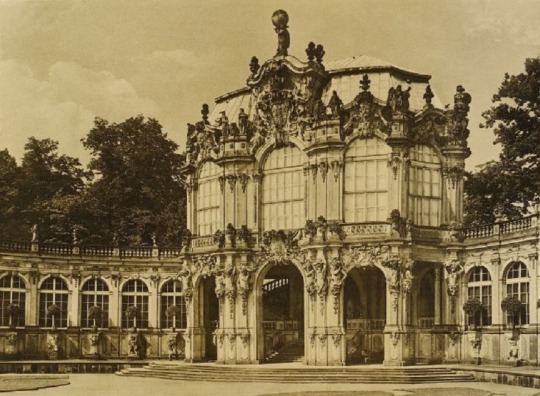


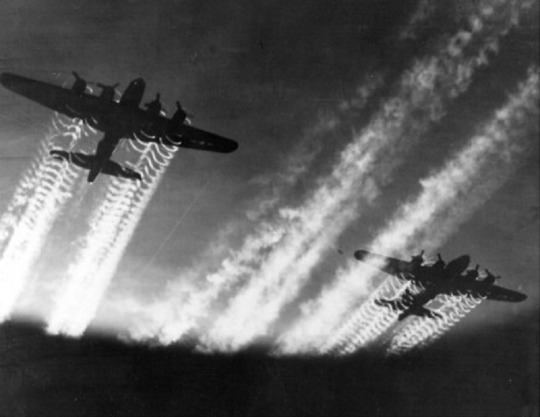


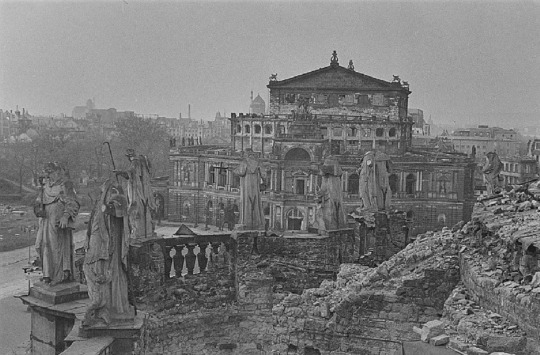

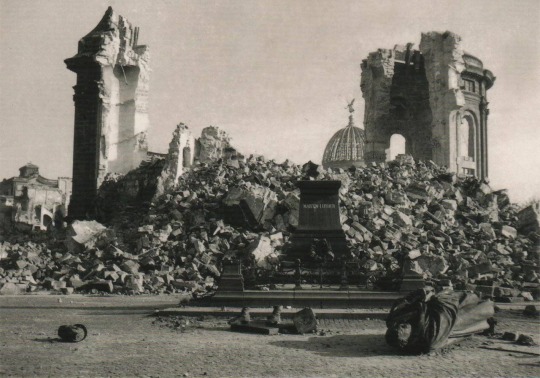
“Wer das Weinen verlernt hat, der lernt es wieder beim Untergang Dresdens. Dieser heitere Morgenstern der Jugend hat bisher der Welt geleuchtet. Ich weiß, dass in England und Amerika gute Geister genug vorhanden sind, denen das göttliche Licht der Sixtinischen Madonna nicht fremd war und die von dem Erlöschen dieses Sternes allertiefst getroffen weinen. Und ich habe den Untergang Dresdens unter den Sodom- und Gomorrha-Höllen der englischen und amerikanischen Flugzeuge persönlich erlebt. Wenn ich das Wort “erlebt” einfüge, so ist mir das noch wie ein Wunder. Ich nehme mich nicht wichtig genug, um zu glauben, das Fatum habe mir dieses Entsetzen gerade an dieser Stelle in dem fast liebsten Teil meiner Welt ausdrücklich vorbehalten. Ich stehe an Ausgangstor meines Lebens und beneide alle meine toten Geistes-kameraden, denen dieses Erlebnis erspart geblieben ist. Ich weine. Man stoße sich nicht an das Wort “Weinen”: die größten Helden des Altertums, darunter Perikles und andere haben sich seiner nicht geschämt. Von Dresden aus, von seiner köstlich-gleichmäßigen Kunstpflege sind herrliche Ströme durch die Welt geflossen, und auch England und Amerika haben durstig davon getrunken. Haben Sie das vergessen? Ich bin nahezu dreiundachtzig Jahre alt und stehe mit meinem Vermächtnis vor Gott, das leider machtlos ist und nur aus dem Herzen kommt: es ist die Bitte, Gott möge die Menschen mehr lieben, läutern und klären zu ihrem Heil als bisher.”
(Gerhart Hauptmann)
Dresden 13./15. Februar 1945
“Elbflorenz” wird die sächsische Stadt wegen ihrer barocken Prachtbauten genannt: der Zwinger, die Frauenkirche, die Brühlsche Terrasse, die Gemäldegalerien, das Grüne Gewölbe und die Semperoper sind nur einige ihrer weltberühmten Wahrzeichen. Dresden gilt als eine der schönsten Städte Europas.
Bisher war Dresden von Bombenangriffen verschont geblieben. Tausende Flüchtlinge hatten in der Stadt Zuflucht gesucht, weil sie glaubten, in dieser Kunst- und Kulturstadt vom Krieg verschont zu bleiben.
Am Faschingsdienstag, 13. Februar 1945 um 21:45 Uhr, wurde in Dresden der 175. Fliegeralarm ausgelöst. Die Menschen begaben sich in die Keller ihrer Häuser oder Wohnblocks und die wenigen vorhandenen Luftschutzbunker.
Die Angriffe begannen bei aufgeklartem wolkenlosem Nachthimmel. Um 22:03 Uhr wurde die Innenstadt von Lancaster-Bombern des No. 83 Squadron, einer „Pfadfinder“-Einheit, mit Magnesium-Lichtkaskaden („Christbäumen“) ausgeleuchtet, zwei Minuten darauf warfen neun britische Mosquitos rote Zielmarkierungen auf das gut sichtbare Stadion am Ostragehege nordwestlich des Stadtkerns. Von 22:13 bis 22:28 Uhr fielen die ersten Bomben. 244 britische Lancaster-Bomber der No. 5 Bomber Group zerstörten die Gebäude mit 529 Luftminen und 1800 Spreng- und Brandbomben mit insgesamt 900 Tonnen Gewicht. Sie gingen südwestlich des Zielpunktes in einem 45-Grad-Fächer zwischen der großen Elbschleife im Westen der Stadt, dem industriell bebauten „Ostragehege“ (heute Messegelände) und dem etwa 2,5 km Luftlinie entfernten Hauptbahnhof nieder.
In diesen 15 Minuten wurden drei Viertel der Dresdner Altstadt in Brand gesetzt. Gezielte Treffer einzelner Gebäude waren bei diesen Nachtangriffen der RAF weder beabsichtigt noch möglich. Vielmehr sollte ein Bombenteppich die gesamte Innenstadt großflächig zerstören. Die Flammen der brennenden Innenstadt nach der ersten Angriffswelle waren im weiten Umkreis am Himmel zu sehen. Manche Brände loderten noch vier Tage lang.
Um 1:23 Uhr begann die zweite Angriffswelle mit 529 britischen Lancaster-Bombern der No.1, No. 3 und No. 8 Groups der Royal Air Force sowie der No. 6 Group der kanadischen Luftwaffe. Sie warfen bis 1:54 Uhr insgesamt 650.000 Stabbrandbomben – 1500 Tonnen – über einem Gebiet von Löbtau bis Blasewitz und von der Neustadt bis Zschertnitz ab. Die von der ersten Angriffswelle verursachten Brände dienten nach Augenzeugenberichten britischer Fliegerbesatzungen zur Orientierung für die nachfolgenden Bomber. Ihre Bomben trafen auch die Elbwiesen und den Großen Garten, wohin viele Dresdner nach der ersten Welle geflüchtet waren. Die Frauenklinik Pfotenhauerstraße des Stadtkrankenhauses Dresden-Johannstadt und die Diakonissenanstalt in der Neustadt wurden schwer beschädigt. Beide Bombardements betrafen ein Stadtgebiet von etwa 15 Quadratkilometern.
Die zweite Angriffswelle zerstörte die Technik der ausgerückten Feuerschutzpolizei und verhinderte weitere Löschaktionen, sodass sich die zahlreichen Einzelfeuer rasch zu einem orkanartigen Feuersturm vereinten. Dieser zerstörte ganze Straßenzüge. In der extremen Hitze schmolzen Glas und Metall. Der starke Luftsog wirbelte größere Gegenstände und Menschen umher oder zog sie ins Feuer hinein. Sie verbrannten, starben durch Hitzeschock und Luftdruck oder erstickten in den Luftschutzkellern an Brandgasen. Wer sich ins Freie retten konnte, war auch dort dem Feuersturm und detonierenden Bomben ausgesetzt.
Den Nachtangriffen folgte am 14. Februar von 12:17 bis 12:31 Uhr ein Tagesangriff von 311 bis 316 B-17-Bombern der USAAF und zwischen 100 und 200 Begleitjägern. Sie warfen bei wolkenbedecktem Himmel über Dresden nach Zielradar 1.800 Sprengbomben (474,5 t) und 136.800 Stabbrandbomben (296,5 t) ab. Ihre Angriffsziele waren einige Rüstungsbetriebe und erneut der Bahnhof und das Reichsbahnausbesserungswerk Dresden in Friedrichstadt. Getroffen wurden auch das dortige Krankenhaus und umliegende Stadtteile. Wegen einer Wetterfront wichen zwei Bombergruppen etwa 100 km südwestlich vom Kurs ab und bombardierten nach Ausfall des Anflugradars einen Ortsteil von Prag im Glauben, es sei Dresden. Im etwa 35 km entfernten Neustadt ging am 14. Februar von den Nachtangriffen verursachter Ascheregen nieder.
Am 15. Februar etwa um 10:15 Uhr stürzte die ausgebrannte Frauenkirche- das Wahrzeichen und die Seele von Dresden- ein.
Von 11:51 bis 12:01 Uhr folgte ein weiterer Tagesangriff von 211 amerikanischen Boeing B-17 Flying Fortress. Bei schlechter Sicht warfen sie 460 Tonnen Bomben, verstreut auf das gesamte Gebiet zwischen Meißen und Pirna.
Abgesehen dass von den architektonischen Kunstschätzen Dresdens kaum etwas übrig blieb, wird über die Opferzahlen heftig debattiert. Historiker gehen von etwa 25.000 Toten aus, während Augenzeugen und Überlebende von Hundertausenden ausgehen, zumal sich in Dresden damals Tausende von polizeilich nicht erfassten Flüchtlingen aufhielten und zahlreiche Opfer durch die immense Hitze der abgeworfenen Bomben verbrannten, ohne Spuren zu hinterlassen.
Dresden 13./15. February 1945
Dresden is one of the most beautiful cities in Europe. For its unique architectural beauty it is called “Elbflorenz” (“Florence of the Elbe”). Zwinger Palace, Frauenkirche (Church of Our Lady), Brühl’s Terrace, the Picture Galleries, the Green Vault and the Semper Opera House are just some of its world-famous landmarks.
So far, Dresden had been spared from air raids. Thousands of refugees had sought shelter in the city because they believed they were spared from the war in this city of art and culture.
On Shrove Tuesday, February 13 1945 at 9:45 pm, sirens sounded the 175th air raid warning in Dresden. The people went to the cellars of their houses or apartment blocks and to the few existing air-raid shelters.
The attacks began on a clear, cloudless evening sky. At 22:03 Lancaster bombers of the No. 83 Squadron, a “scout” unit, lit the inner city with magnesium light cascades (“Christbäume”), two minutes later nine British Mosquitos threw red target marks on the well-visible stadium at the Ostragehege northwest of the city center. From 22:13 to 22:28 the first bombs fell. 244 British Lancaster bombers of the No. 5 Bomber Group destroyed the buildings with 529 airmines and 1800 explosive and fire bombs with a total weight of 900 tons. They descended to the south-west of the destination in a 45-degree fan between the large Elbe loop in the west of the city, the industrially built “Ostragehege” (today exhibition grounds) and the main railway station, which is about 2.5 km away.
In these 15 minutes, three quarters of Dresden’s historic distric were set on fire. Targeted hits of individual buildings were neither intended nor possible during these RAF night attacks. Rather, a bomb carpet should destroy the entire inner city on a large scale. The flames of the burning city center after the first wave of attack were visible in the sky within of many hundreds of miles. Some fires continued for four days.
At 1:23 the second attack wave began with 529 British Lancaster bombers of No.1, no. 3 and no. 8 groups of the Royal Air Force and the No. 6 Group of the Canadian Air Force. They threw a total of 650,000 bomb bombs - 1500 tons - over an area from Löbtau to Blasewitz and from Neustadt to Zschertnitz until 1:54 am. The fires caused by the first attack wave were used by the British aviation authorities to provide guidance for the subsequent bombers. Their bombs also hit the meadows of the river Elbe and the Great Garden, where many Dresdeners had seeked shelter after the first air raid. The gynaecological clinic Pfotenhauerstraße of the city hospital Dresden-Johannstadt and the hospital “Diakonissenanstalt” in the Neustadt were severely damaged. Both bombardments concerned a city area of about 15 square kilometers.
The second attack wave destroyed the technology of the fire-fighting police, and prevented fire-fighting duties, so that the numerous individual fires quickly combined into a hurricane-like firestorm. This destroyed whole streets. In the extreme heat glass and metal melted. The strong air suction swirled larger objects and people around or pulled them into the fire. They burnt, died of heat shock and air pressure or suffocated from the fire gases in the few air-raid shelters. Anyone who could save himself in the open air was also exposed to the firestorm and detonating bombs.
On 14 February from 12:17 to 12:31 a day attack followed from 311 to 316 B-17 bombers of the USAAF and between 100 and 200 accompanying hunters. They threw 1,800 explosive bombs (474.5 tons) and 136,800 bombs (296.5 tons) over Dresden in the cloudy sky. Their attack targets were some armaments companies and again the station although virtually everything of it already was in ruins. The hospital and surrounding districts were also affected. Because of a weather front two bomber groups deviated about 100 km southwest of the course and bombed a district of Prague in the belief that it was Dresden after the failure of the approach radar. In the Neustadt (new town), which was about 35 km away, a ash fall was caused by the night attacks on 14 February.
On February 15, at about 10:15 the burned-out Frauenkirche - the symbol of the heart of Dresden - collapsed.
From 11:51 to 12:01 followed another day attack of 211 American Boeing B-17 Flying Fortress. In poor visibility they threw 460 tons of bombs, scattered over the entire area between Meißen and Pirna.
Surviving eyewitnesses testify that some allied bomber pilots chased people in low-level flight like rabbits to kill them. The use of phosphor by the Allies is denied by historians but surviving eywitnesses state that a building like the Dresden train station that was build of massive steel melted like wax and that even paving stones were in flames. This could only be caused by the use of phosphor.
Apart from the of complete destruction of all of Dresden’s numorous architectural treasures, the number of victims is heavily debated. Historians go on about 25,000 deaths, while witnesses and survivors are speaking of hundreds of thousands because in Dresden thousands of unaccounted refugees were present at the time of the bombings, and numerous victims were burned to ashes immediately by the immense heat during the air raids.
The famous German poet Gerhart Hauptmann wrote:
“Whoever has forgotten how to weep, he learns it again at the downfall of Dresden. This cheerful morning star of youth has so far shone to the world. I know that there are good spirits in England and America, to whom the divine light of the Sistine Madonna was not alien, and which are deeply moved by the extinction of this star. And I personally experienced the downfall of Dresden under the Sodom and Gomorrah hells of English and American airplanes.
When I insert the word “experienced”, it is still a miracle to me. I do not take myself to be so important to believe that the Fatum has reserved this horror just at this point in the almost dearest part of my world. I stand at the end of my life and envy all my dead fellow writers, who have been spared this experience.
I weep. One does not irk touch the word “weeping”: the greatest heroes of antiquity, including Pericles and others, have not been ashamed of it. From Dresden, from its deliciously artistry, splendid streams have flowed through the world, and England and America have also drank of thirsty. Did they forget that? I am almost eighty-three years old, and stand with my legacy before God, which is unfortunately powerless and comes only from the heart: it is the request that God should love men more, purify and clarify their salvation than before. “
#dresden#sachsen#meine heimat#deutschland#bombardierung#geschichte#saxony#germany#my homeland#bombing#wir werden niemals vergessen#we will never forget#unaussprechlich traurig#inexpressibly sad
12 notes
·
View notes
Text
Dresden: Nach blutigem Angriff in Johannstadt - Opfer wurde notoperiert, Täter sitzt in U-Haft! | TAG24
Bréjkingnyúz
Ölik a Magyart a Szírek Németországban, este benne lesz a Híradóban. Egész nap egyūtt voltak, oszt tessék, estére kijött a Szírből belőle brutál a Migráns Gyilkos!!!!!
1 note
·
View note
Photo

VOB on tour: Lada Niva 4x4 #asundaycarpic . . . #ladaniva #nivalove #ladataiga #allroad #4x4 #4wd #russia #lada #russiancar #overland #offroad #jeep #4x4life #niva #offroadrus #ladanivaoffroad #vanlife #ladaniva4x4 #soloparking #carspotting #overlander #adventuremobile #overland #explore #Berlin #johanngeorgenstadt #johannstadt #vansofberlin #eckeprenz (hier: Johanngeorgenstadt) https://www.instagram.com/p/CEyfu3qFwjr/?igshid=6cwvgeqth7tv
#asundaycarpic#ladaniva#nivalove#ladataiga#allroad#4x4#4wd#russia#lada#russiancar#overland#offroad#jeep#4x4life#niva#offroadrus#ladanivaoffroad#vanlife#ladaniva4x4#soloparking#carspotting#overlander#adventuremobile#explore#berlin#johanngeorgenstadt#johannstadt#vansofberlin#eckeprenz
8 notes
·
View notes
Photo

Dresden ~ Johannstadt ~ 20190305_201547
1 note
·
View note
Text
Pilzkopfverriegelung in Dresden Johannstadt nachrüsten – LoKa Sicherheitstechnik
LoKa Sicherheitstechnik. Sicherheitsfachmann für Fenstersicherung und Einbruchschutz. Wir sichern Ihre Fenster mit einer Pilzkopfverriegelung in Dresden Johannstadt. Ganz einfach auch zum nachrüsten.
Pilzkopfverriegelung in Dresden Johannstadt nachrüsten – LoKa Sicherheitstechnik
Die LoKa Sicherheitstechnik GbR, ist der kompetente Ansprechpartner, wenn es um eine Nachrüstung von Pilzkopfverriegelung in Dresden Johannstadt geht!
Pilzkopfverriegelung nachrüsten
Die häufigste Einbruchmethode ist das Aufhebeln von Fenstern und Terrassentüren. Da diese oft mit einer Rollzapfenverriegelung…
View On WordPress
0 notes
Text

Watching in silence.
#outerworld #winter #smartphonephotography #pixelfed365 #fediphoto365 #dresden johannstadt
2 notes
·
View notes
Text
Fußball-Frauen
SV Reichenbach : SpG SV Loschwitz / SV Johannstadt 2 (8:0)

View On WordPress
0 notes
Photo

#HoyEnRecomendacionesLL 📚♥️ • LA NOCHE INTERMINABLE #EmiluoPariente @ediciones_alfar 🔺 #LanocheInterminable 🔻 Ficción histórica ambientada en la ciudad de Dresde (Alemania), en el transcurso de la Segunda Guerra Mundial. 🔻 Matthias Kurz, un joven médico católico que trabaja en el hospital de Johannstadt, atiende a los heridos que llegan del frente de Stalingrado; a la vez, prepara su debut como tenor “Evangelista” en el Oratorio de la Pasión según San Mateo de Juan Sebastian Bach, en el templo de la Frauenkirche de la ciudad. 🔺🃏Para Matthias, cantar los Recitativos de la Pasión es estar cerca de Dios, es arrogarse un protagonismo sagrado, es vivir al margen del atribulado mundo de los demás ciudadanos. 🔺 📖📚 #Recomendaciones2020LL🌟 #NovelaHistorica #YoLeoAlfarEdiciones #RecomendacionesLL #YaEnMisManos🤲 #Novela #YoLeo #SiempreLibros #SiempreBuenosLibros #LeoYRecomiendo #LeerEsSexy #Leer #Instafit #EncuentrosConEscritores #LeyendoSiempreYEnCualquierSitio #ClubDeLectura #ClubDeLecturaLL #recomiendoleer #Bookstagram #FelicesLecturas📖 (en Navalmoral de la Mata, Spain) https://www.instagram.com/p/CEbyiicCKtC/?igshid=1dipklob3wi2z
#hoyenrecomendacionesll#emiluopariente#lanocheinterminable#recomendaciones2020ll🌟#novelahistorica#yoleoalfarediciones#recomendacionesll#yaenmismanos🤲#novela#yoleo#siemprelibros#siemprebuenoslibros#leoyrecomiendo#leeressexy#leer#instafit#encuentrosconescritores#leyendosiempreyencualquiersitio#clubdelectura#clubdelecturall#recomiendoleer#bookstagram#feliceslecturas📖
0 notes
Photo

07.01.18 Trinitatiskirche in der Johannstadt / wer zockt den da im Seitenturm XD
1 note
·
View note
Photo

“Johannstadt”
1 note
·
View note